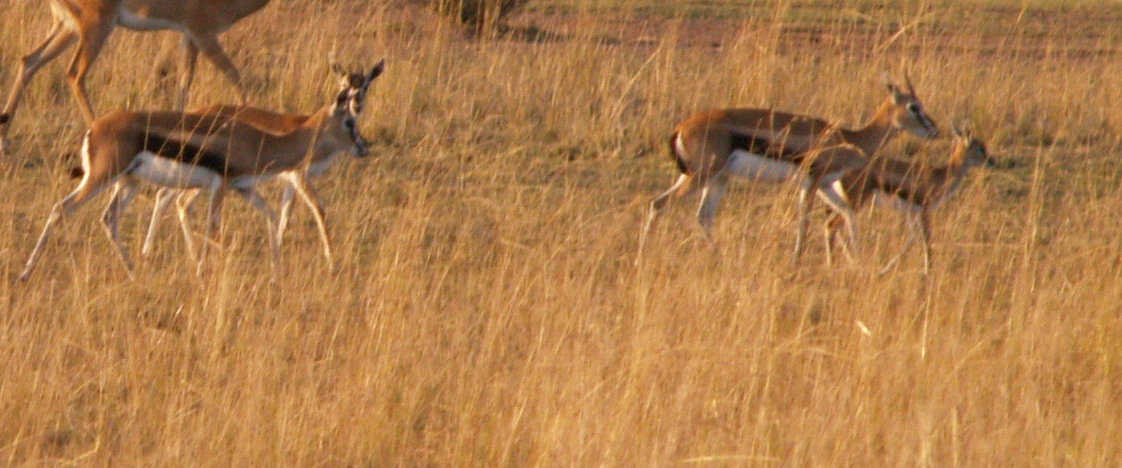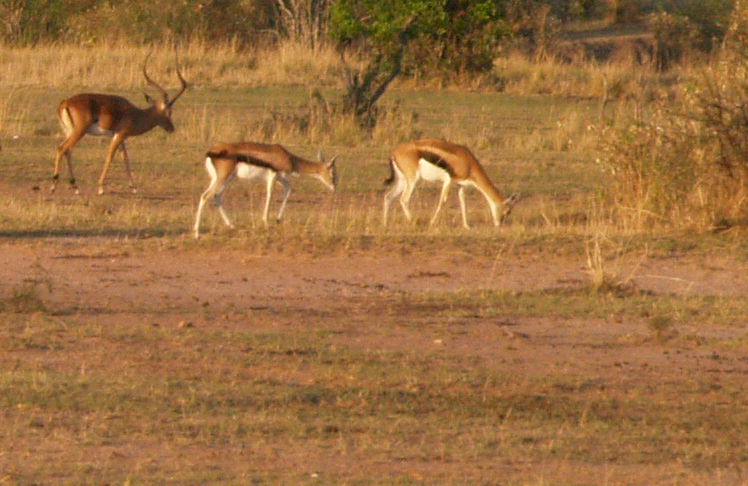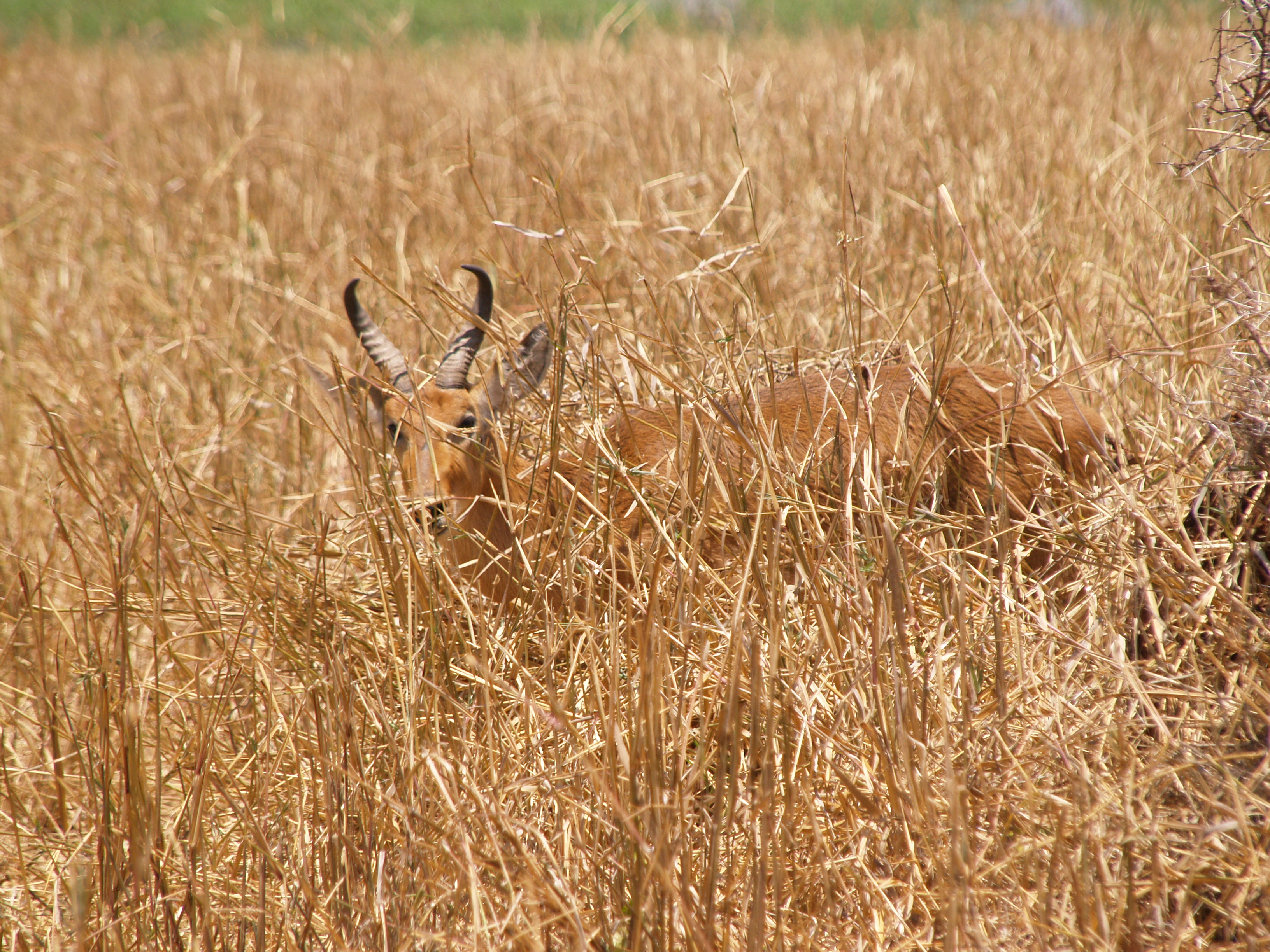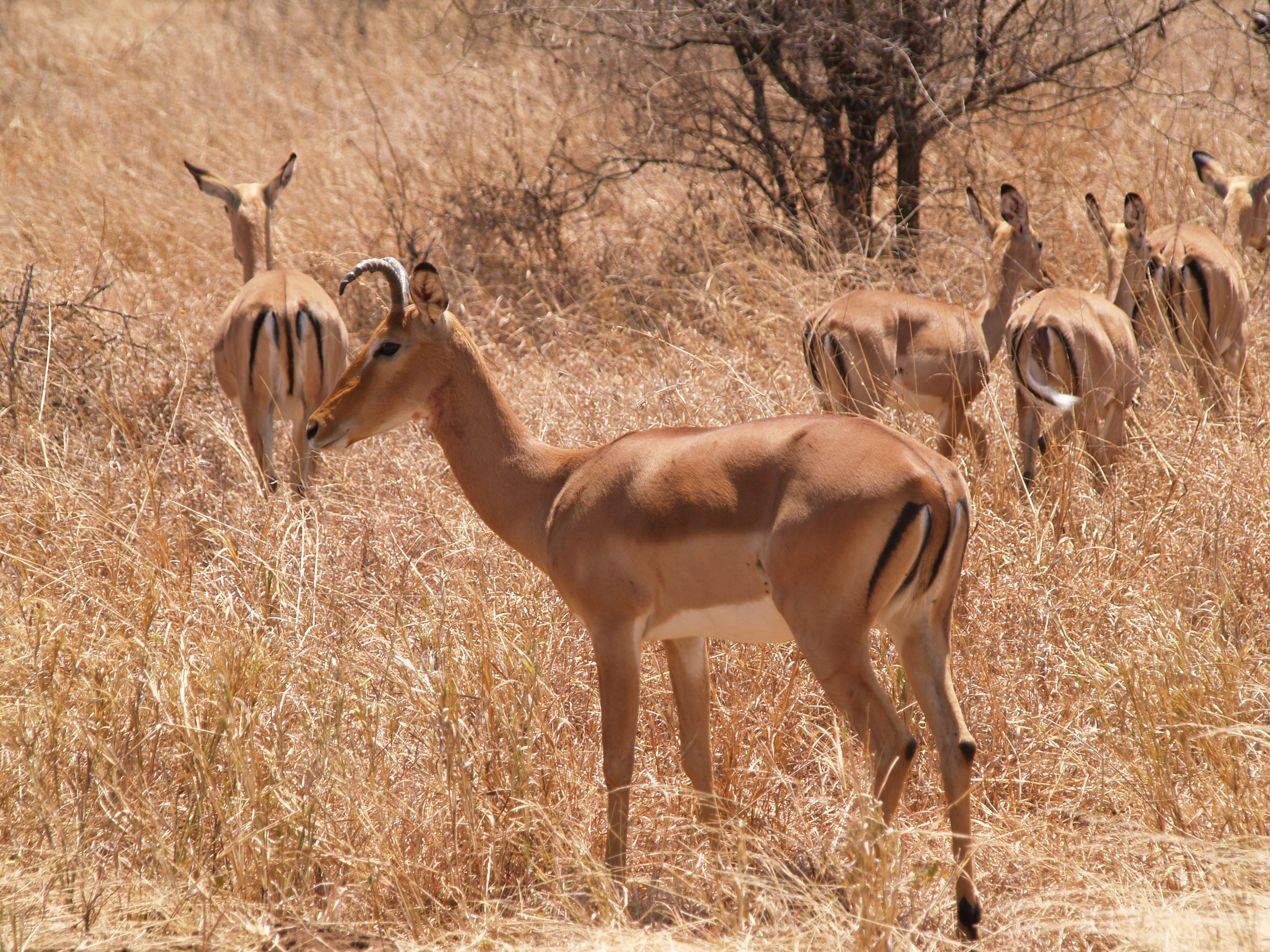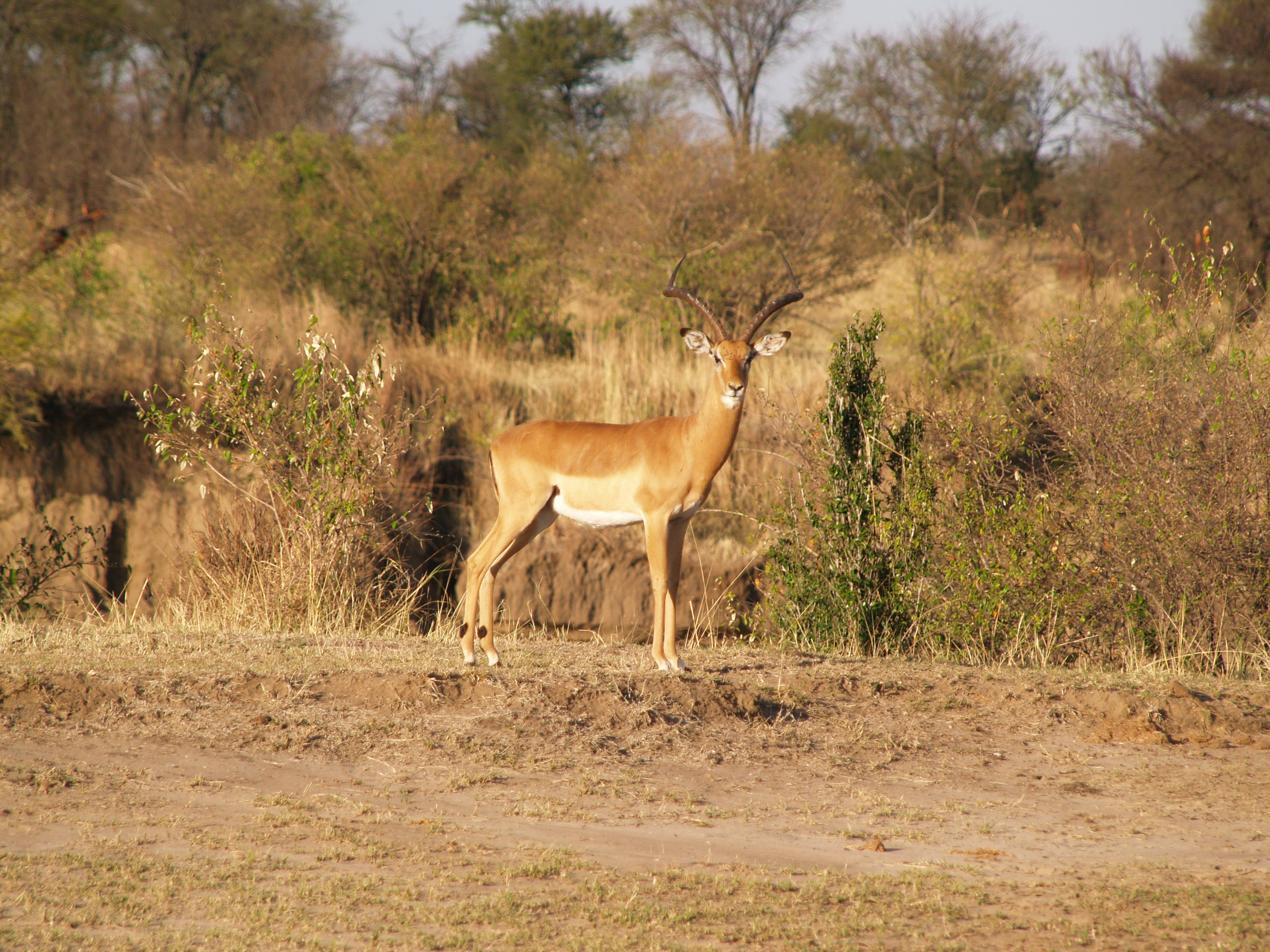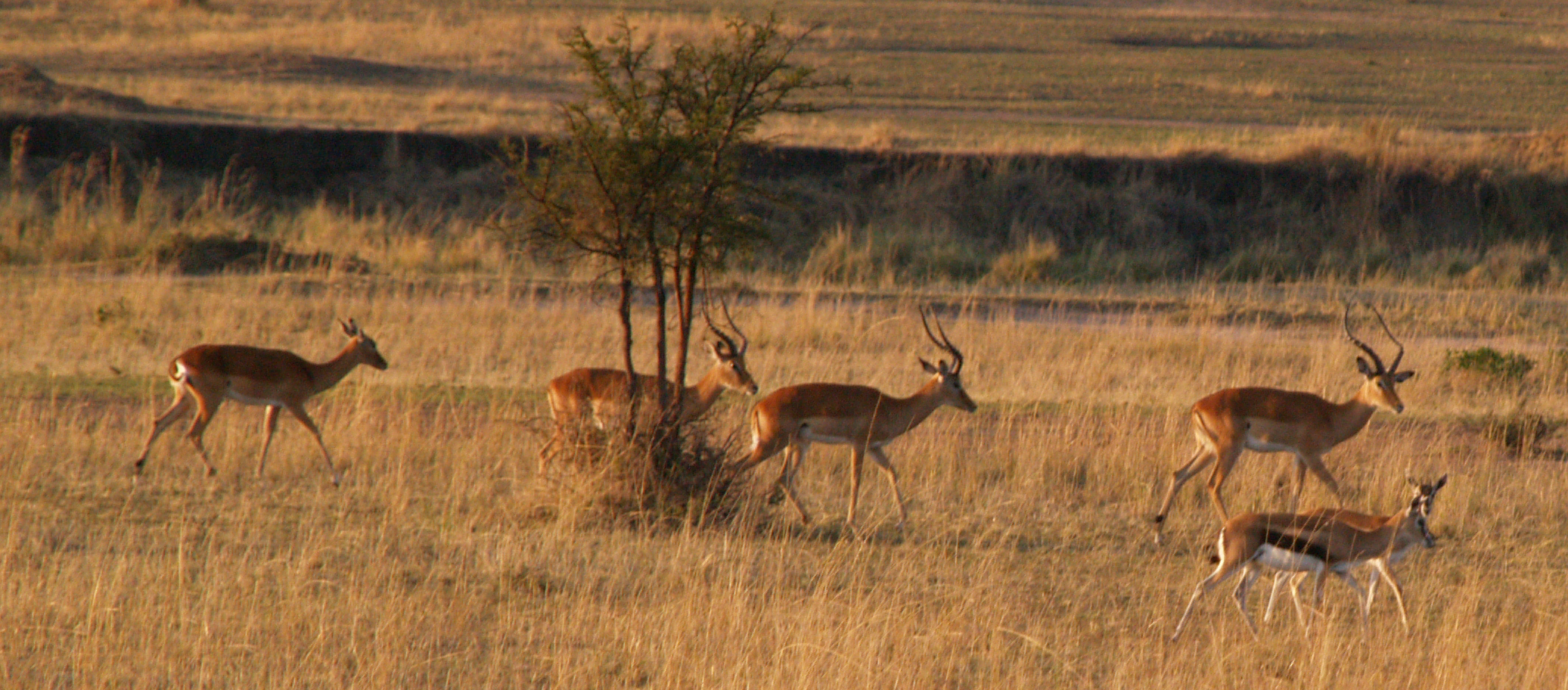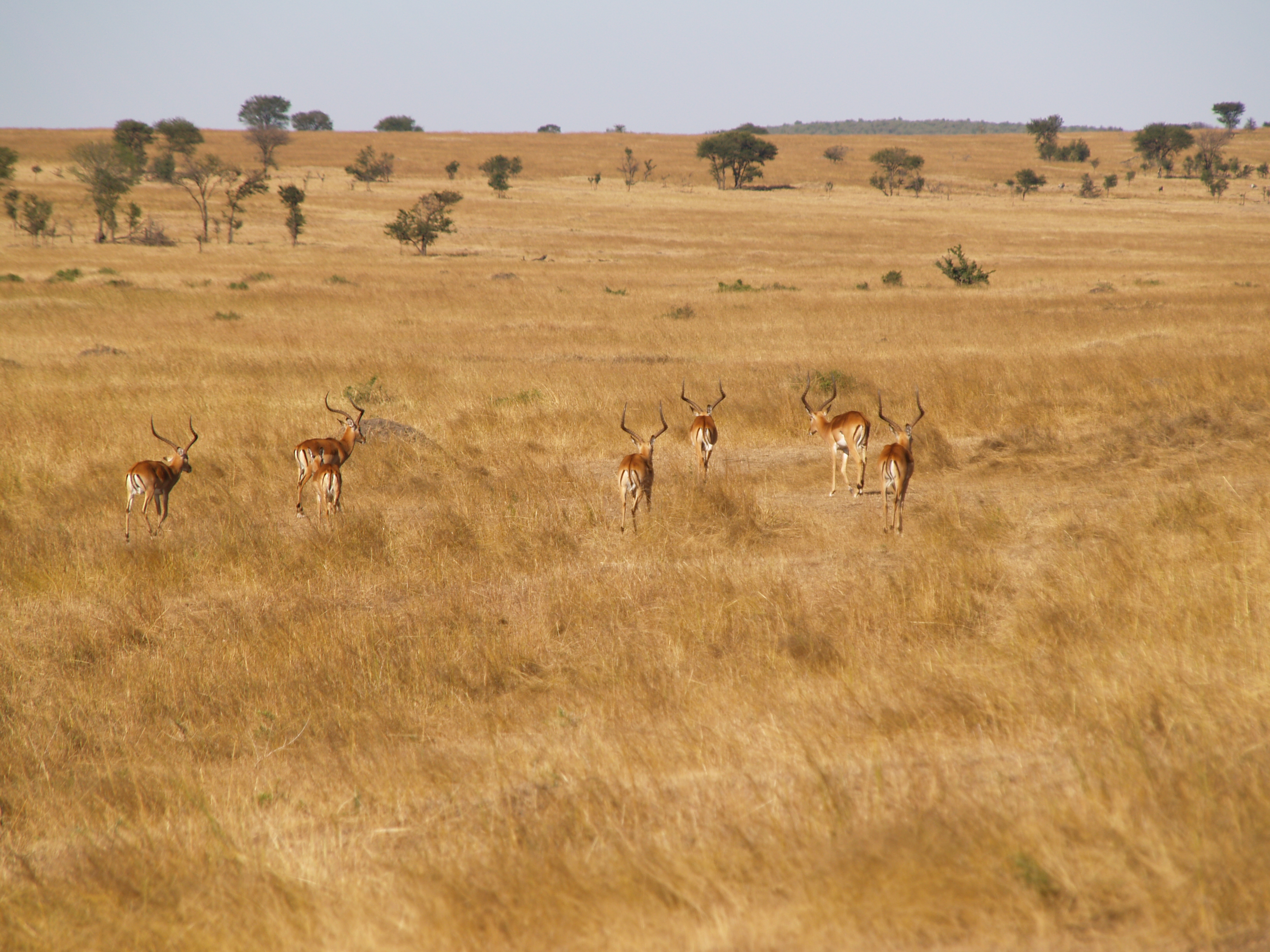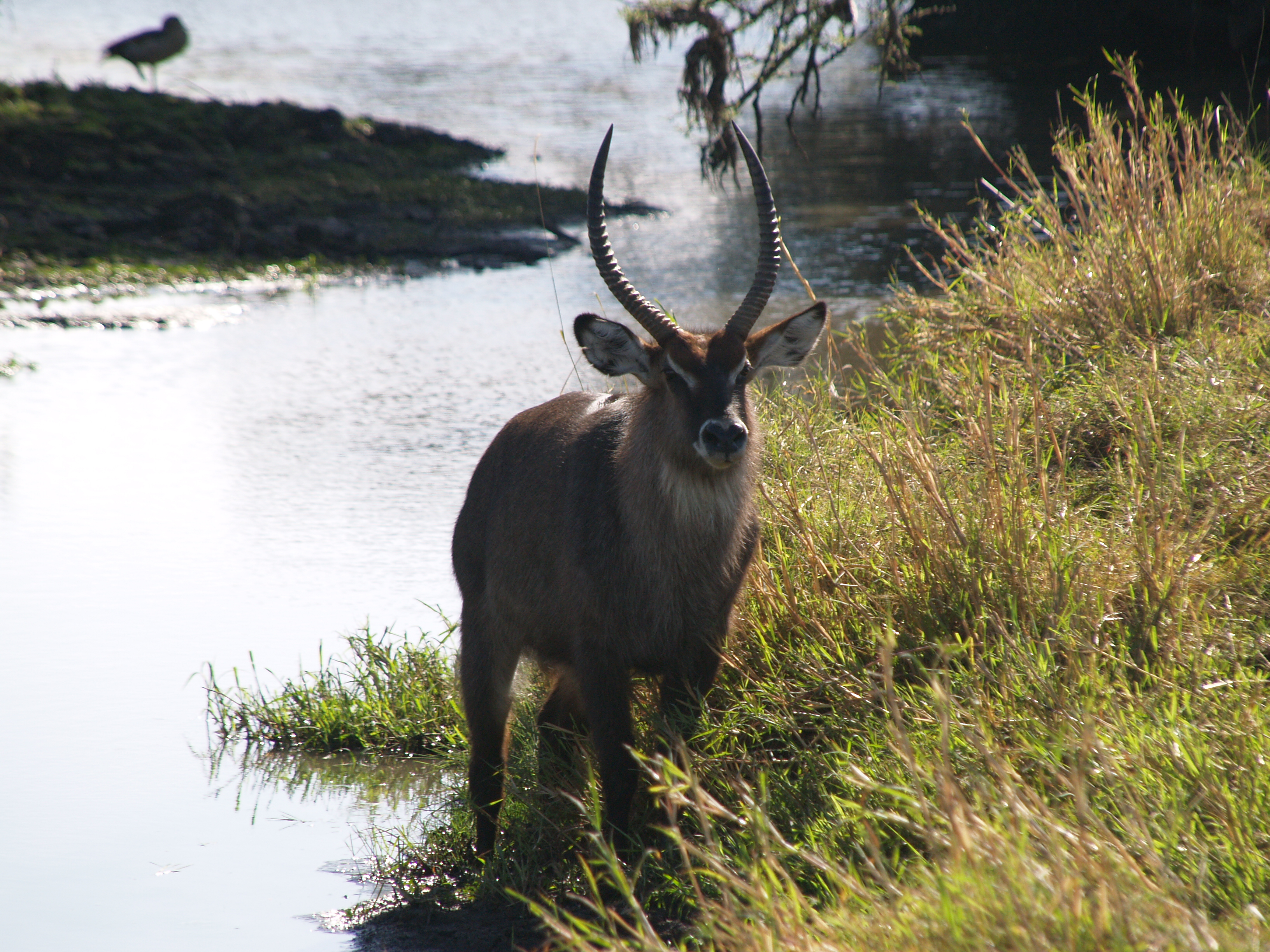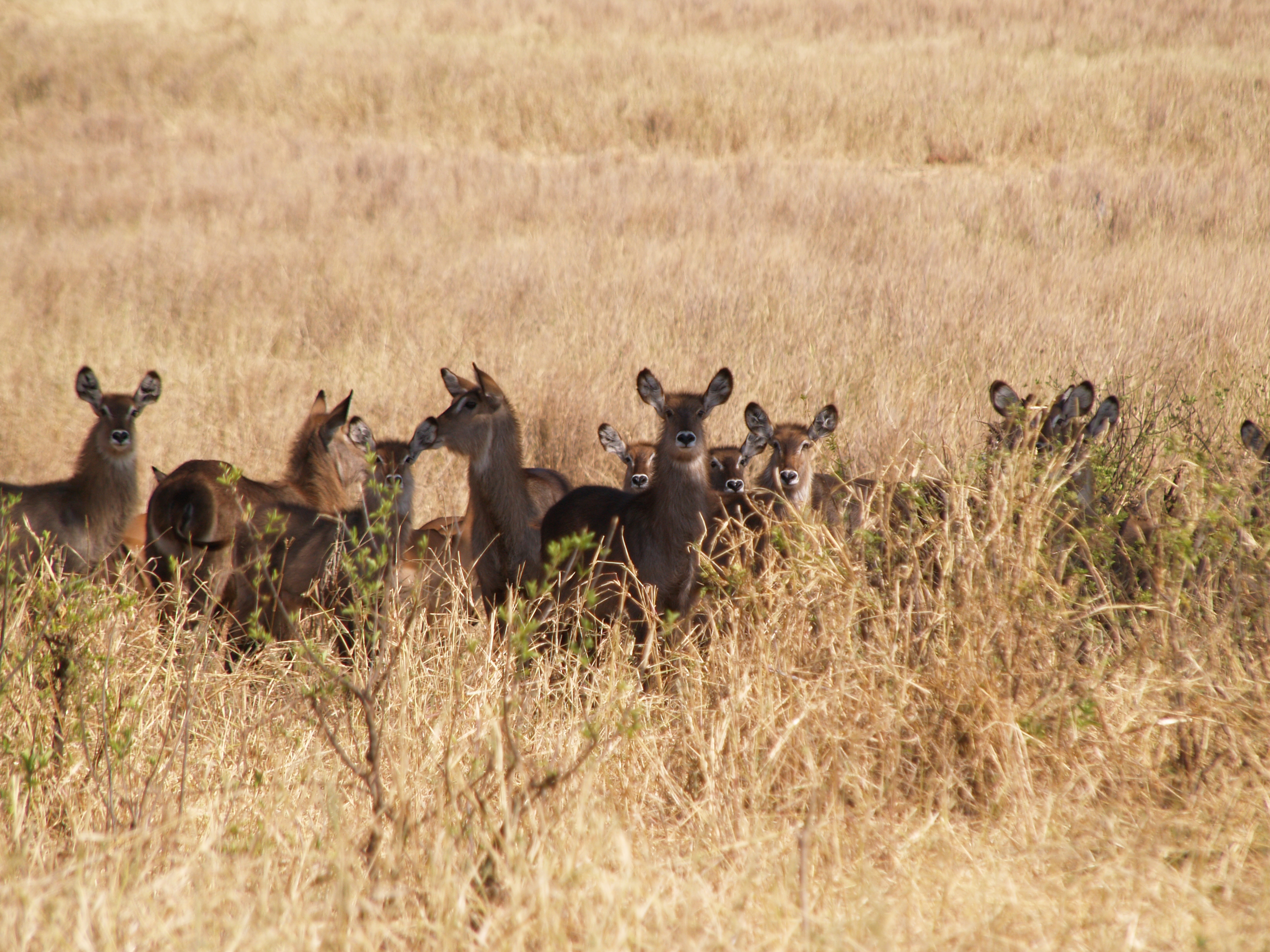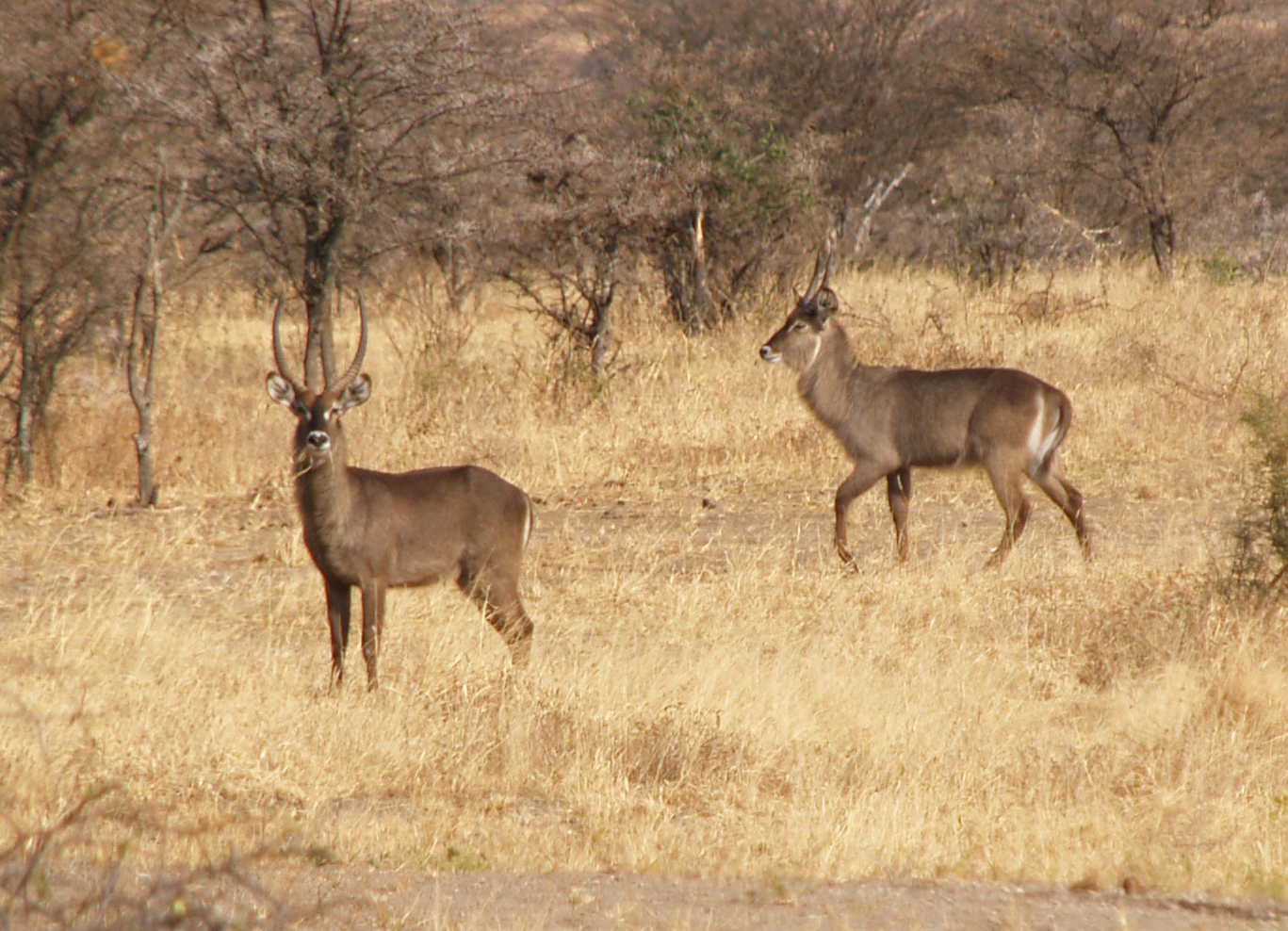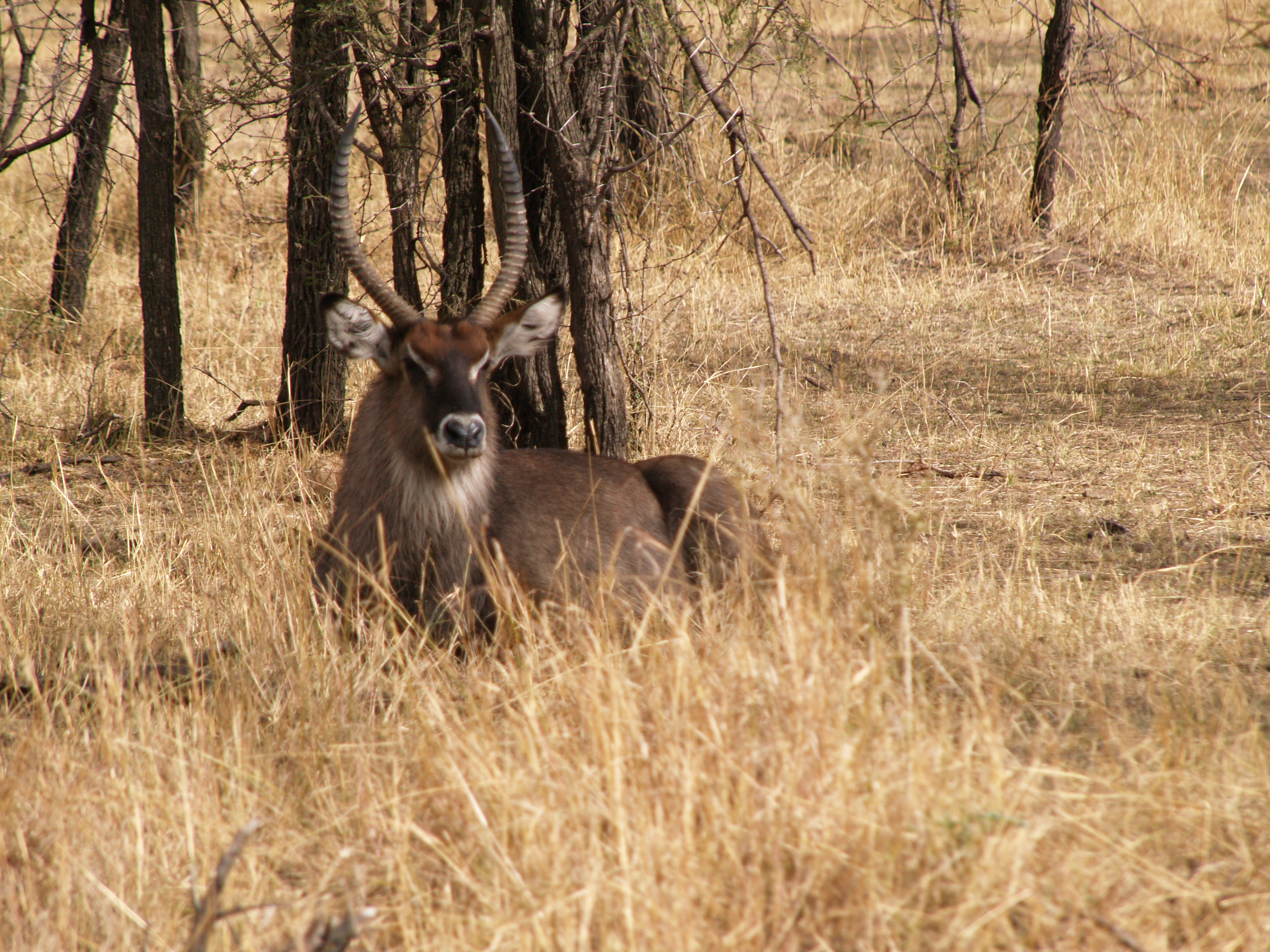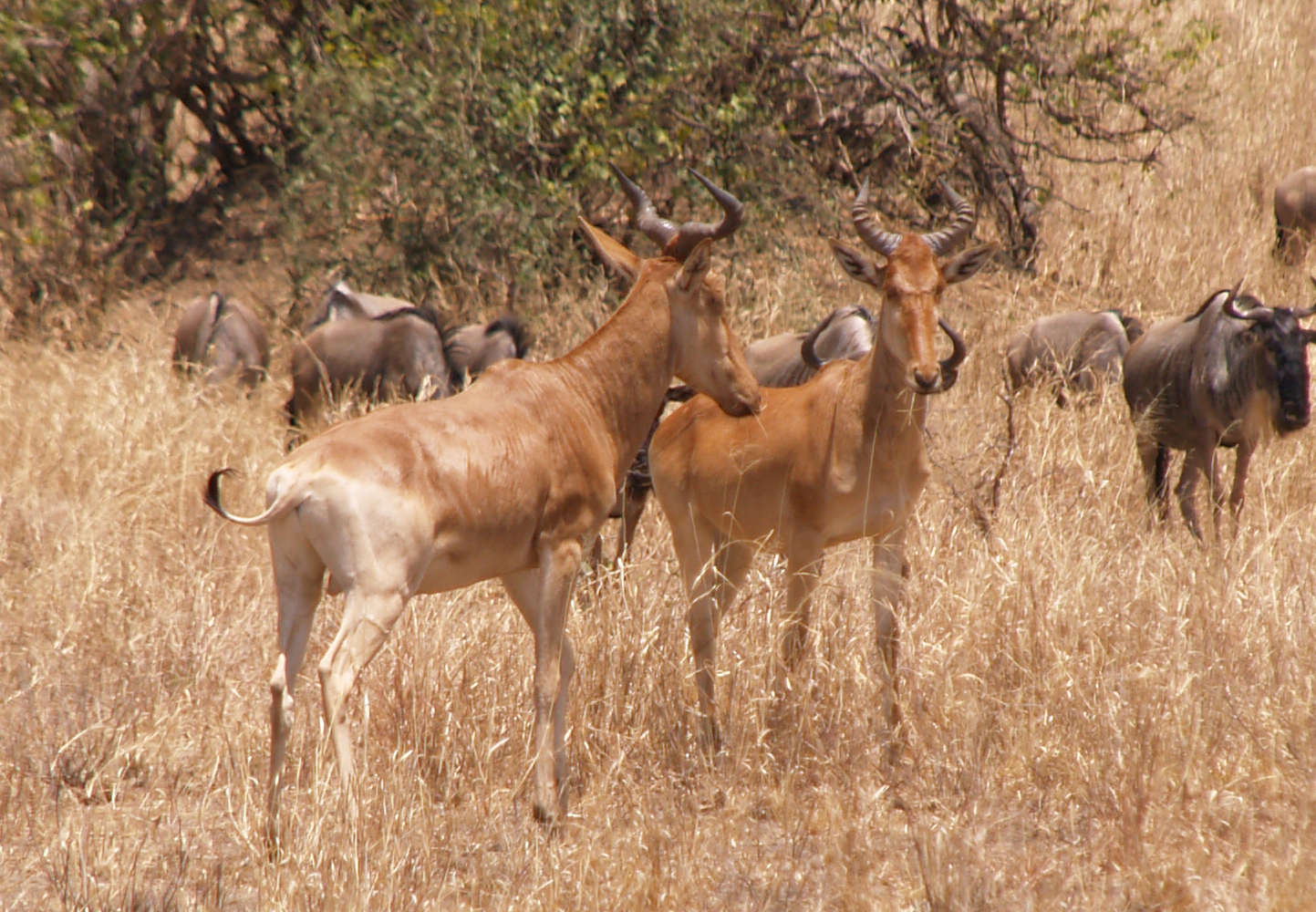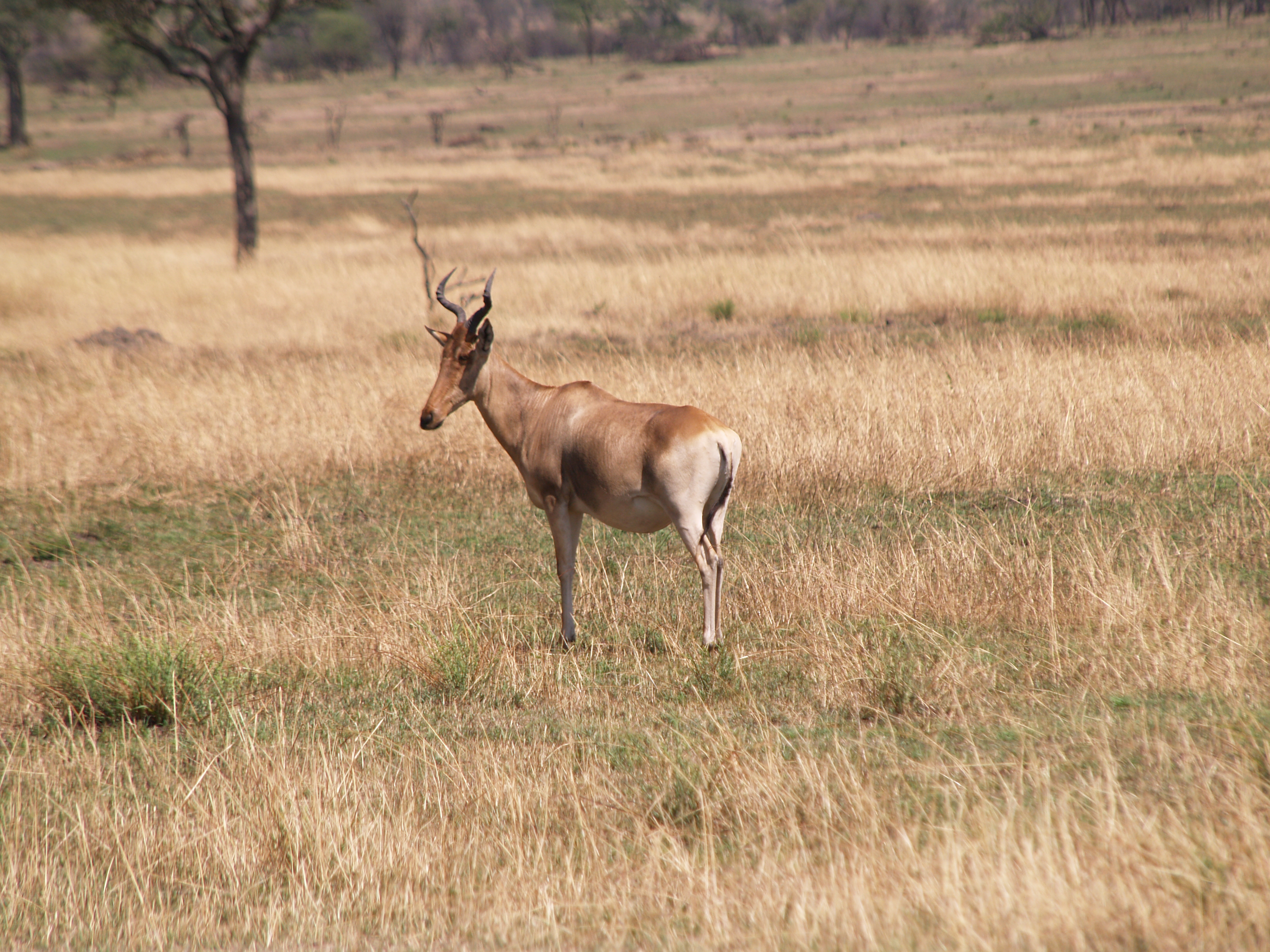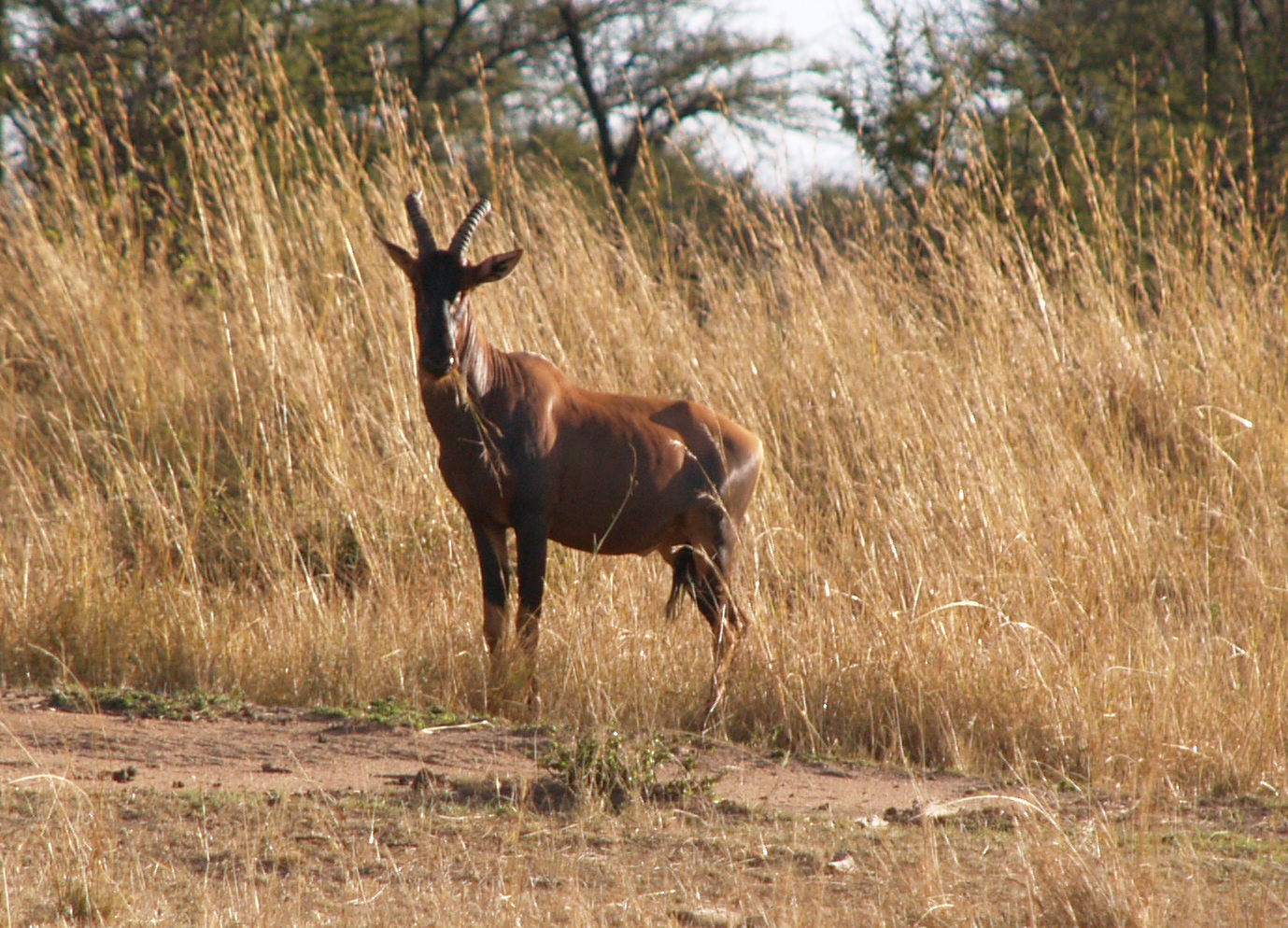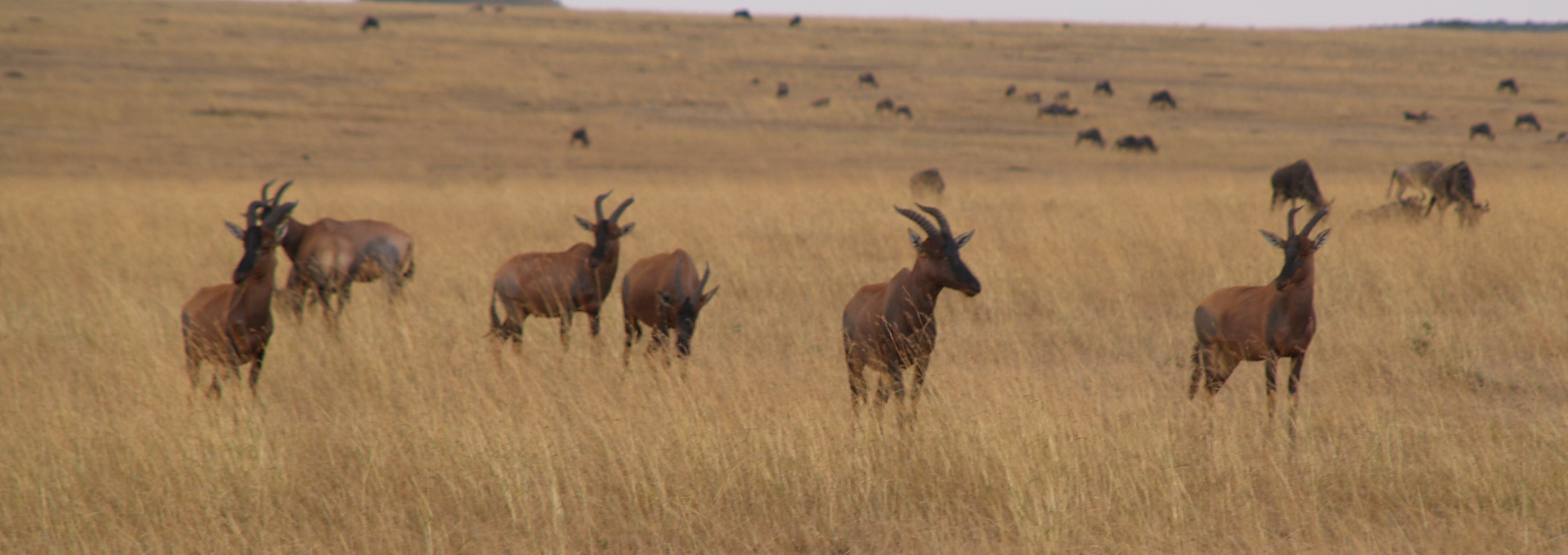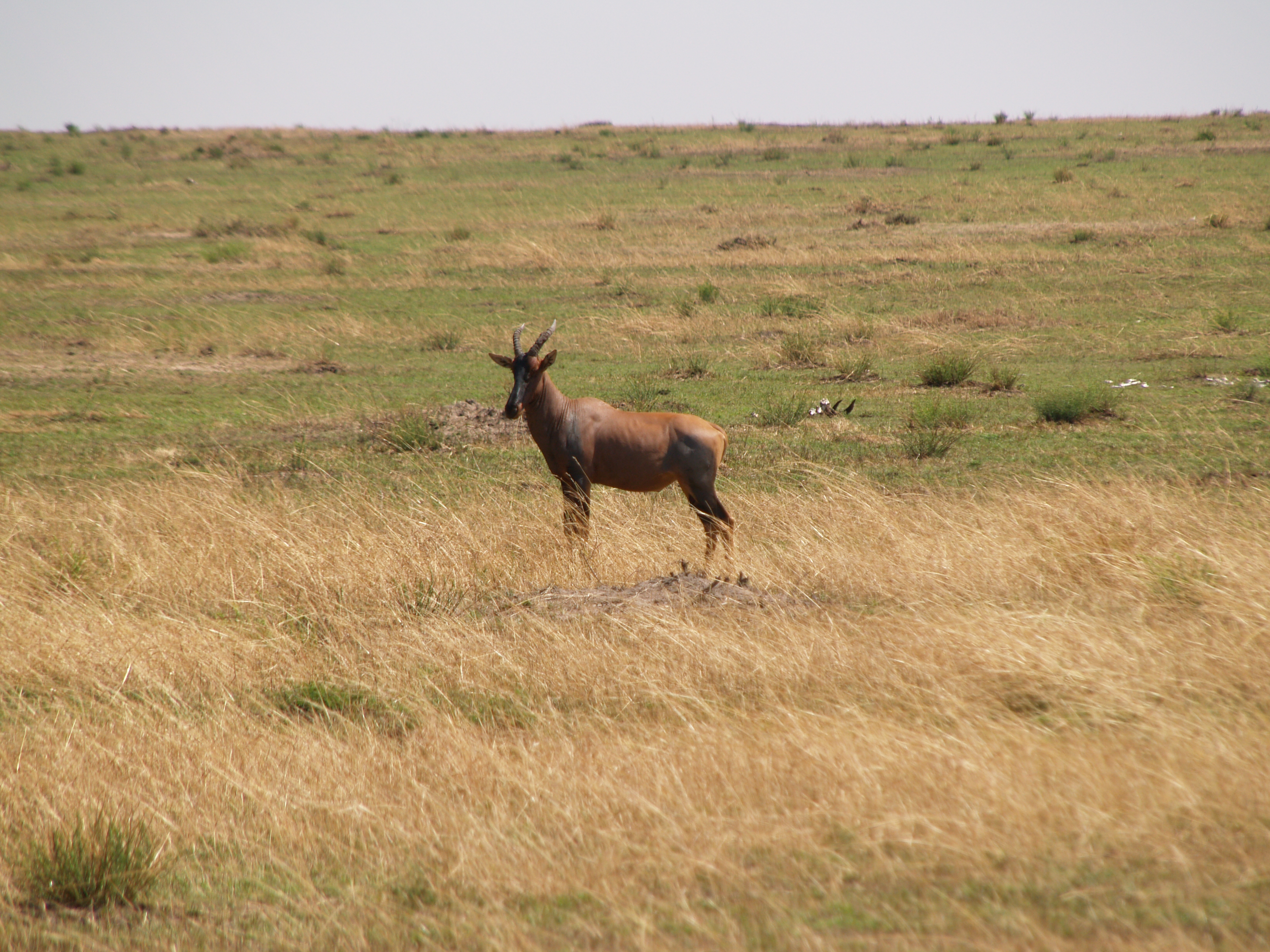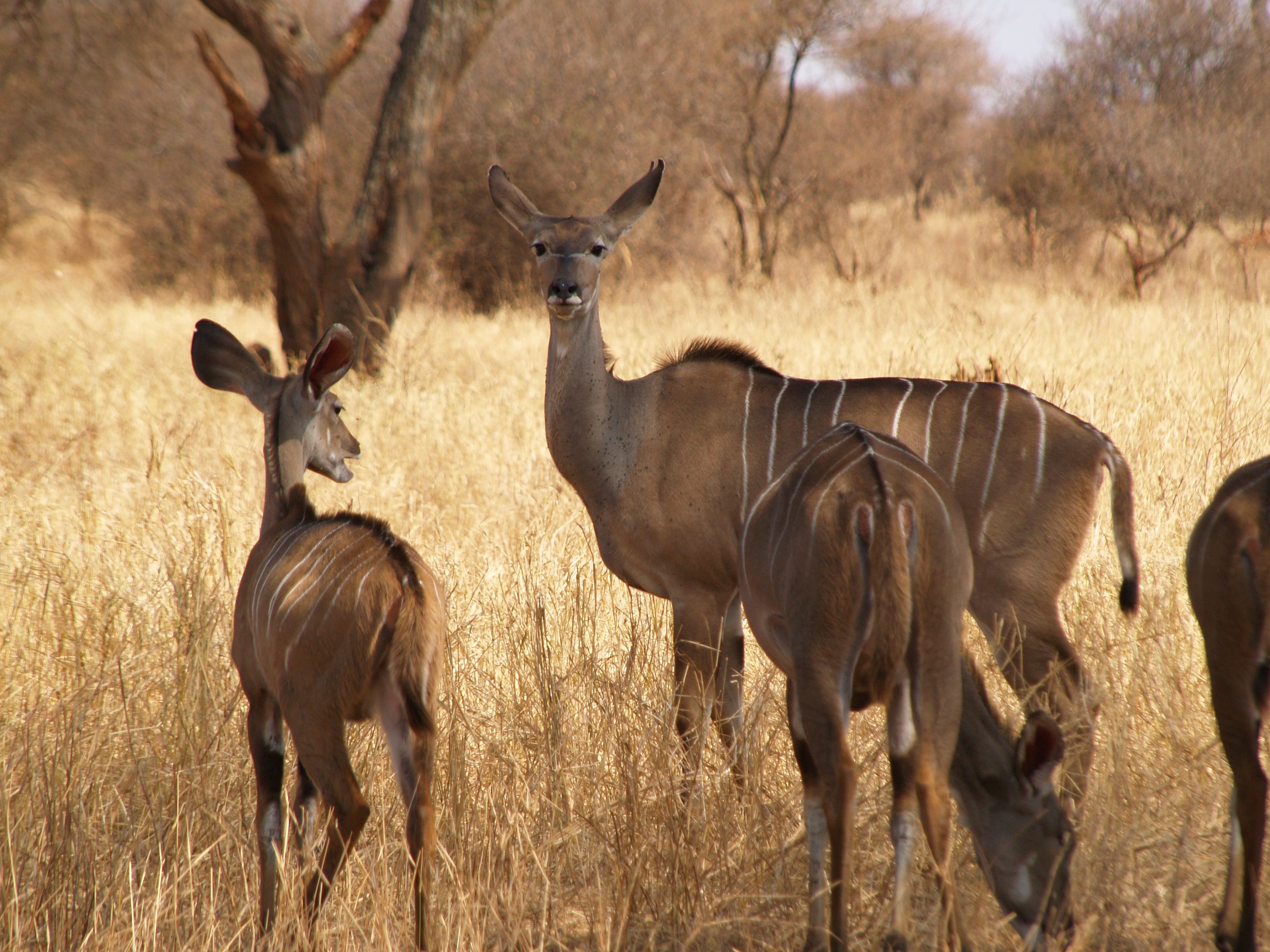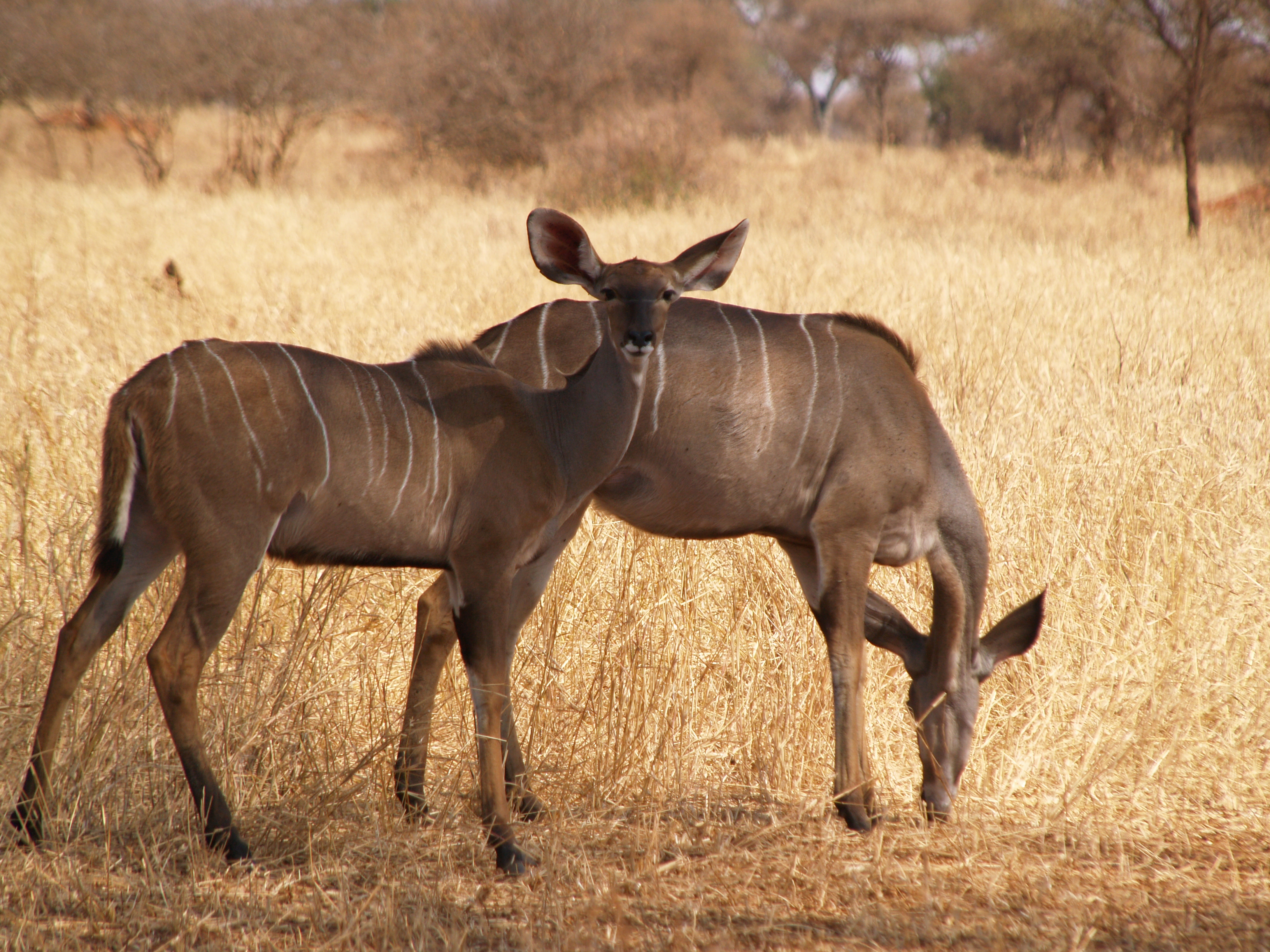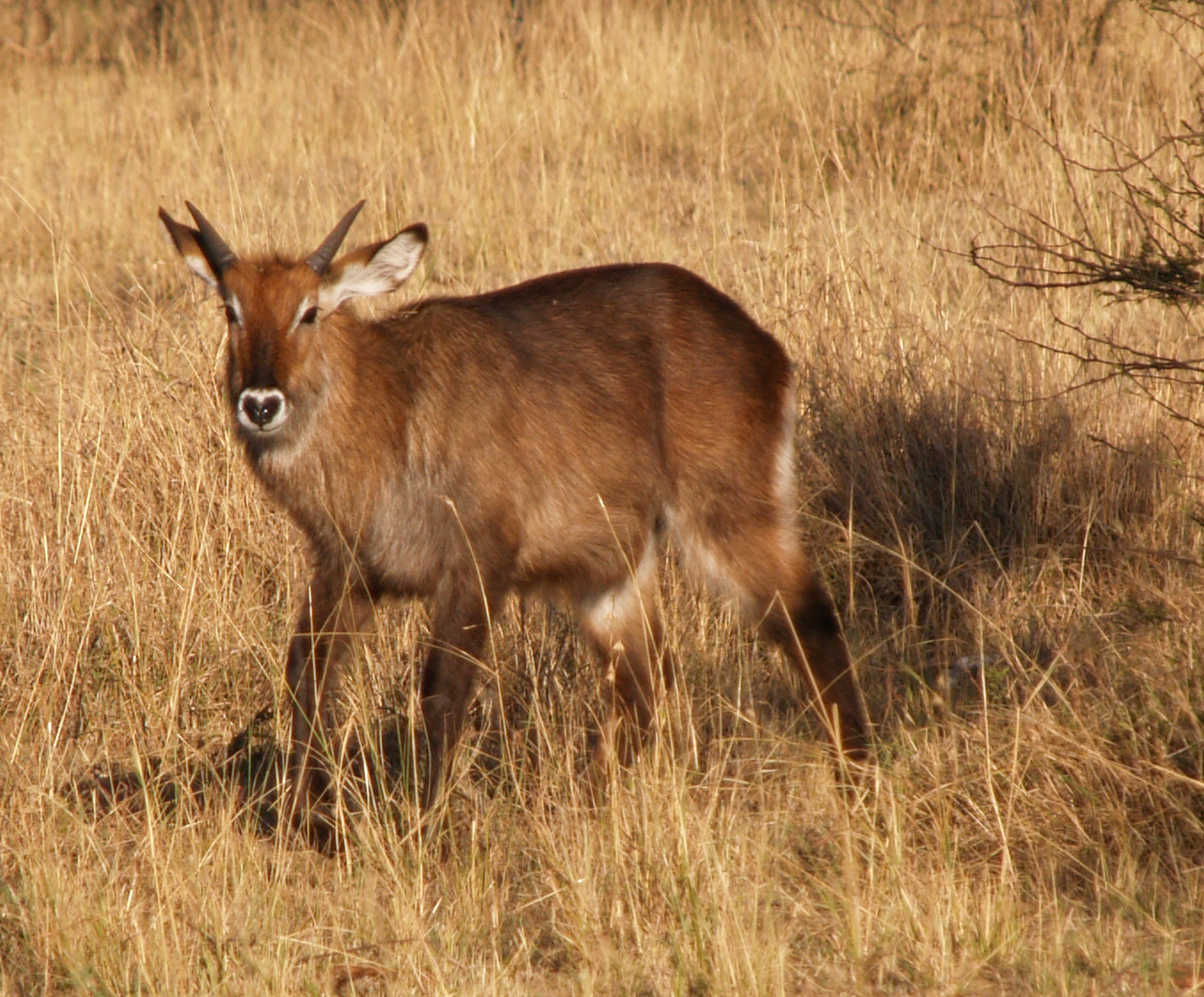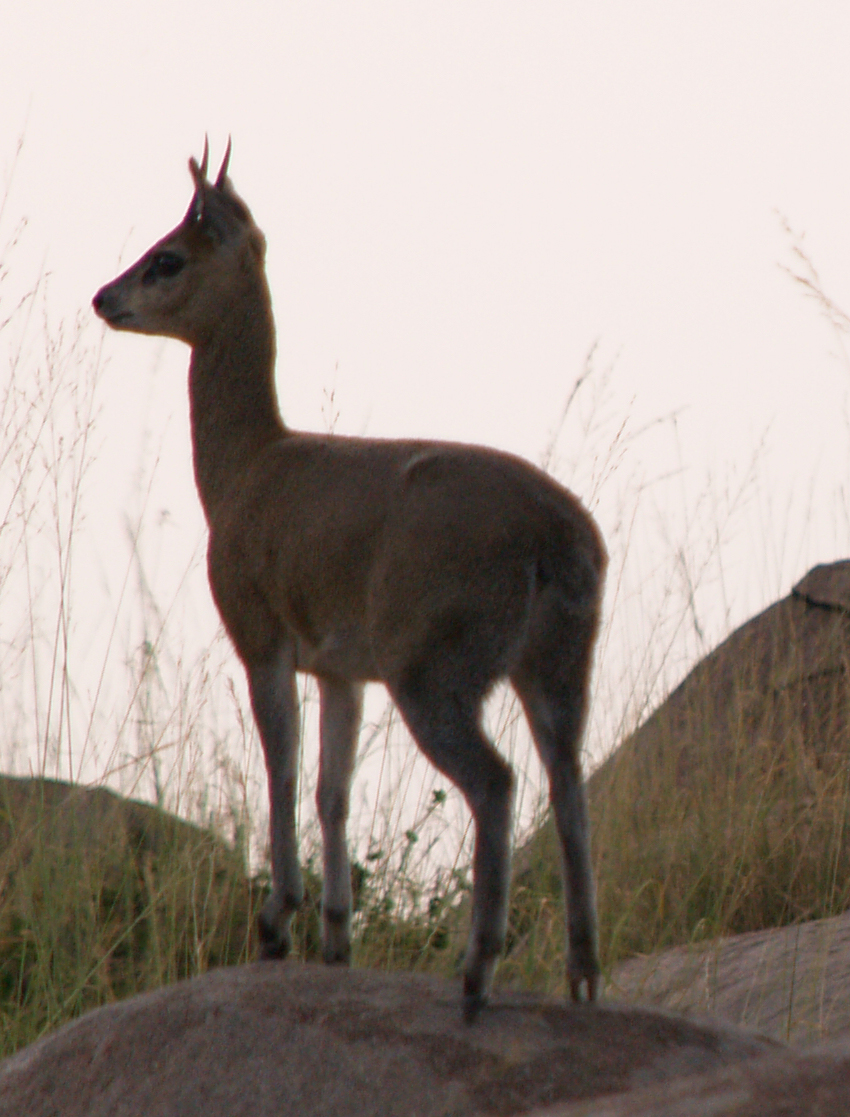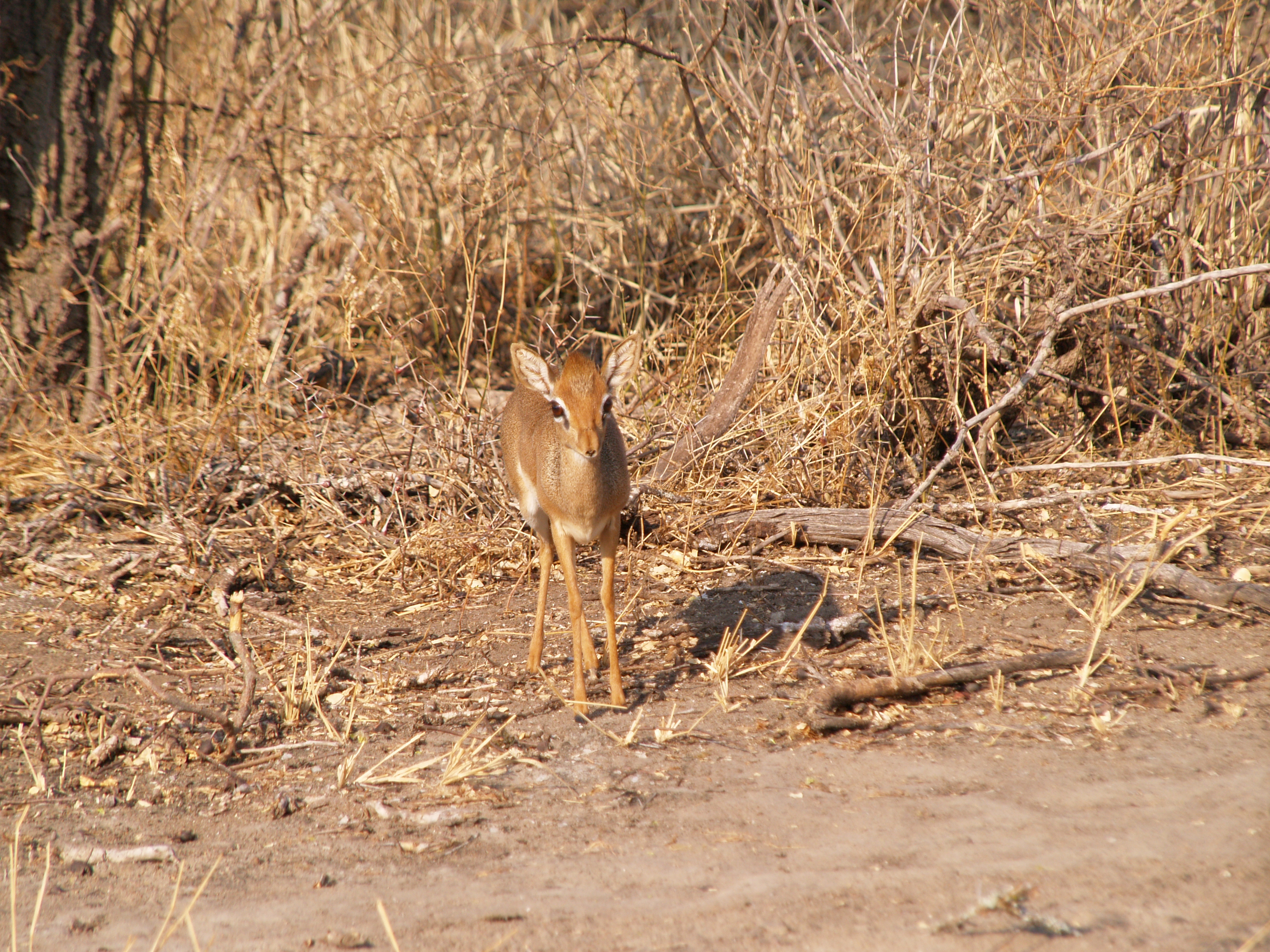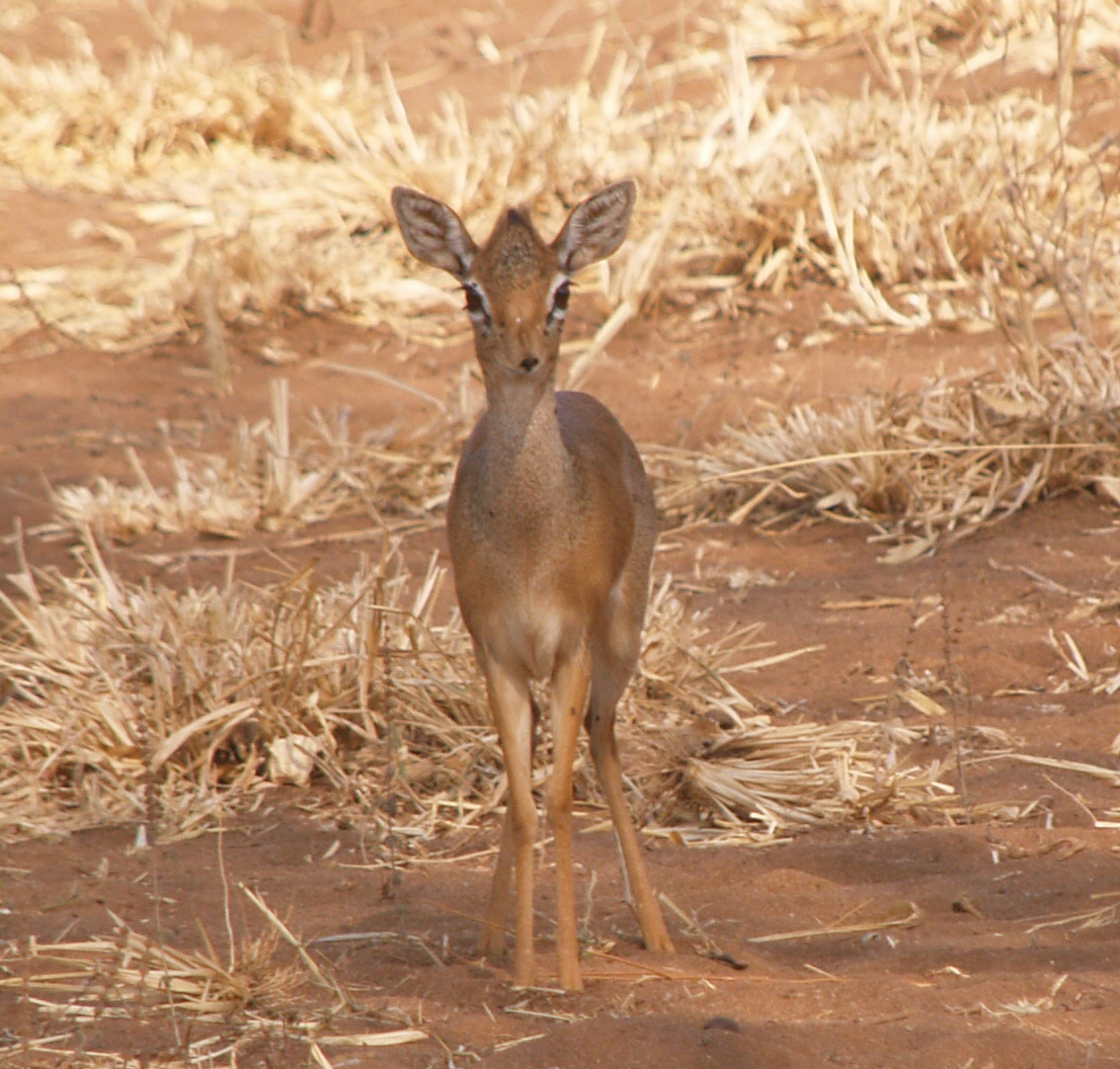The Serengeti is consider one of the finest national parks in African, due to the diversity of animals living together in the ecosystem. The antelopes make up a large part of this population. All herbivores, it is interesting how they all do their part in sustaining the ecosystem. The animals tend to feed on different species, gazelle prefer herbs and shrub leafs, wildebeest feed on a wide variety of nutritious, short grasses and topi eat long grass leaves. Each animal goes its part in controlling the different grasses so no one grass becomes more dominate or forces others to disappear. Plus it helps in making the grasses even more productive by the selective grazing. We also saw large areas of controlled burning, the animal seem to favor the fresh grasses growing in these areas after the burn. I read that the parks that make up the greater Serengeti grassland ecosystem have been successful in protecting and preserving the habitat for these wonderful animals as its been for the past several thousand years. Here are some of the antelopes we saw.
The gazelles are the second most common antelope in the Serengeti. They migrate with the wildebeest and zebras. Standing 24 to 31 inches tall at the shoulder, weighing between 35 to 55 pounds. The males have long curved horns. They live 10-15 years. For protection they can run up to 60 mph and are able to dart here and there very quickly out maneuver there predator. More info on the Thomson gazelle.
The Springbok is in the same family as the gazelle but are larger in size. They can run 55 mph and can leap over 12 feet through the air, giving its name the springbok. Springbok can meet there water needs by grazing on fresh grasses and can survive without drinking water for years at a time. They often graze before dawn on selected flowers, seeds and leaves when they are most succulent. We did not see many, my only picture.
The impala is a medium sized antelope. It is one of the most abundant antelopes in Africa with a large population in the Serengeti. Water is important to the impala, it is found in savanna grasslands near water sources. It is sometimes referred to as the McDonalds of Africa because it has a vertical black stripe on the back of each thigh resembling the golden arches. Impalas are very fast runners, they are able to leap distances of up to 33 feet and as high as 10 feet. They use this ability to escape from predators and sometimes simply to amuse themselves. Typically a running impala will simply jump over anything in its path. The males have long spiral horns which they use to challenge each other to dominate herds of females and mate with them. The losers end up joining bachelor herds. More info on the impala.
The waterbuck is a medium to larger antelope, males weigh as much as 575 lbs. They have long spiral horns 22-39″ long. They cannot tolerate dehydration so they are mostly found along rivers, lakes and valleys. They form small herds of between 6 and 30 animals and are somewhat territorial. More info on the waterbuck.
The hartebeest are very social animals and form herds of 20 to 300 individuals. Both male and female have horns that curve outwards and them point back inwards, used to defend against predators. More info on the hartebeest.
Topi looks similar to a hartebeest but they have darker coloration on the face and shoulders. Found mostly in the grasslands, they prefer green plants and if enough is available also do not need to drink. Topi like to use vantage points, like standing on termite mounds to get a good look of their surroundings. More info on the topi.
There are two types, the greater and lesser kudus. Known for their horns with two and a half twists and the vertical white stripes on their brownish to reddish coats. We saw the greater in the Tanangire. They prefer a mix of woodlands, bushlands, and hills and mountains. They feed on leaves, flowers and fruits. It is considered to be the most handsome of the antelopes. we did not see any male kudus. More info on kudus.
The eland is the largest of the antelopes in Africa, the males weighing up to 2,000 lbs. Found in larger herds, they prefer a wide variety of flowering plants in the savanna plains. It is the slowest of the antelopes, tops speed of 25 mph and they tire quickly. But they can maintain a run at 14 mph indefinitely. Like many of the other antelopes the eland will adjust to its surroundings and use the plants they eat for water. Or they will drink water when its available. They are hard to photograph as they are fearful of vehicles. The pictures I was able to shoot did not turn out. More info on elands.
The klipspringer is a small antelopes standing only 23″ at the shoulders. One of the few who pair and mate for life. Found in rocky terrain, they never need to drink, feeding on succulent plants, giving them enough water to survive. More info on klipspringer
The dik dik is the smallest of the antelopes, standing at 12-16″ at the shoulders. They also mate for life. Found in thick cover and shrub lands with plenty of cover. Like to klipspringer they do not need to drink. They are territorial and have a series of paths through and around the territory borders that is used when threatened. More info on dik diks.

